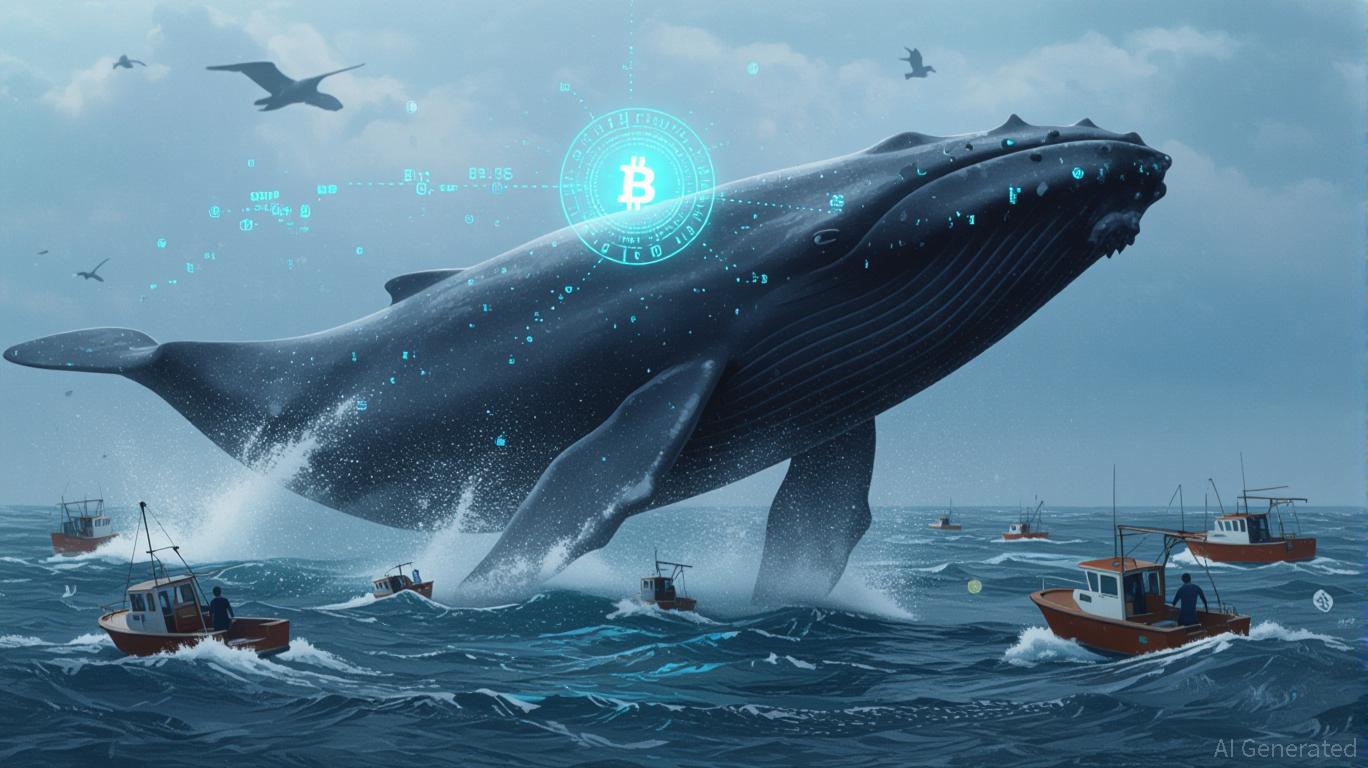How Retail Traders Are Getting Squeezed—and How to Fight Back

In the decentralized finance (DeFi) arena, the rules of the game are being rewritten by a new breed of predator: crypto whales. These entities, armed with vast capital and algorithmic precision, are exploiting the vulnerabilities of low-liquidity tokens on decentralized exchanges (DEXs) to orchestrate explosive volatility, short squeezes, and retail carnage. The recent XPL token manipulation on Hyperliquid—where a 200% price surge in minutes wiped out $2.5 million in short positions—exposes a systemic flaw in the DeFi ecosystem. For investors, the lesson is clear: without rigorous due diligence, even the most “decentralized” markets can become playgrounds for the powerful.
The Mechanics of Whale-Driven Chaos
Whales thrive in environments where liquidity is thin and order books are fragile. On platforms like Hyperliquid, which uses a Central Limit Order Book (CLOB) instead of traditional Automated Market Makers (AMMs), large players can strategically place orders to trigger cascading liquidations. In the XPL case, whales flooded the market with long positions, forcing smaller traders to cover short bets at unsustainable prices. The result? A $47.5 million windfall for the whales and a $2.5 million loss for one retail trader, CBB.
This isn’t an isolated incident. In early 2024, a whale manipulated Ethereum pairs on Binance by creating a 2% price spike above resistance, only to reverse the trend and liquidate $12 million in leveraged shorts. The playbook is consistent: exploit retail clustering at key levels, trigger stop-loss orders, and profit from the ensuing panic.
Why DEXs Are Vulnerable
Decentralized exchanges, while lauded for transparency, lack the circuit breakers and regulatory safeguards of centralized platforms. Hyperliquid’s CLOB model, for instance, offers real-time price discovery but also enables whales to exploit liquidity gaps. When a whale identifies a cluster of stop-loss orders at a specific price level, a single large trade can trigger a domino effect, inflating prices artificially.
The problem is compounded by the lack of institutional-grade risk management. On centralized exchanges, market makers and liquidity providers often absorb volatility. On DEXs, however, the absence of such buffers means that a single whale can destabilize an entire market. The October 2023 “flash wick” in XMR/USDT, where Monero dropped 12% in seconds, is a case in point. With no regulatory oversight to intervene, the damage was immediate and irreversible.
Tools for the Retail Investor: Order-Book Depth and Whale Tracking
To avoid becoming prey, investors must prioritize order-book depth and on-chain whale activity in their token selection. Here’s how:
- Order-Book Analysis:
- Use platforms like Hyperliquid’s CLOB to assess liquidity. A healthy order book should have balanced buy and sell volumes across price levels. If a token’s order book is skewed (e.g., heavy long positions with minimal short liquidity), it’s a red flag for potential manipulation.
-
Whale Tracking Tools:
- Platforms like altFINS and SILS framework metrics (Exponential Time-Weighted Liquidity, LSIS scores) can identify whale movements. For example, large ETH inflows into Aave V3 in Q3 2025 signaled institutional confidence, while sudden withdrawals often precede price collapses.
-
Token Selection Criteria:
- Avoid low-liquidity tokens with high volatility. Instead, focus on projects with robust TVL (Total Value Locked) and cross-chain diversification. Aave V3’s $40.3 billion TVL in May 2025, for instance, reflects institutional-grade stability.
- Monitor on-chain metrics like exchange supply ratios. A declining exchange supply (e.g., Aave’s 29.74% drop in Q3 2025) often indicates whale accumulation and bullish sentiment.
Strategic Risks and Opportunities
While the risks are stark, the DeFi landscape also offers opportunities for savvy investors. Whales aren’t just predators—they’re also indicators of market sentiment. When large players move into protocols like Aave V3 or Uniswap v3, it often signals confidence in the underlying infrastructure. For example, the Ethereum Foundation’s $2 million GHO loan in May 2025 reinforced trust in Aave’s risk frameworks, while institutional custody integrations (Fireblocks, Coinbase Custody) lowered barriers for large-scale participation.
However, the key is to diversify across protocols and chains. Aave’s cross-chain expansion into Aptos and Pendle’s tokenized yield markets provide hedging against Ethereum’s volatility. Similarly, leveraging long-term borrowing (44.25% of Aave’s activity in May 2025) can mitigate short-term risks while capitalizing on stable interest rates.
Conclusion: Play the Long Game
The DeFi space is evolving rapidly, but one truth remains: whales will always seek to exploit liquidity gaps. For retail investors, the path to survival lies in due diligence, diversification, and data-driven decision-making. Prioritize tokens with deep order books, track whale movements using tools like altFINS, and avoid the siren call of low-liquidity altcoins.
As the XPL and XMR flash wick cases show, the market is unforgiving for those who ignore the signs. But for those who adapt—leveraging the same tools that whales use to their advantage—the future of DeFi holds not just risk, but reward.